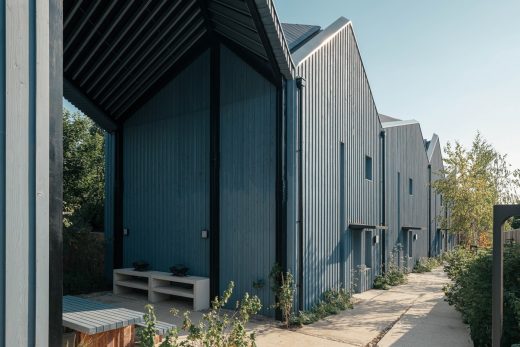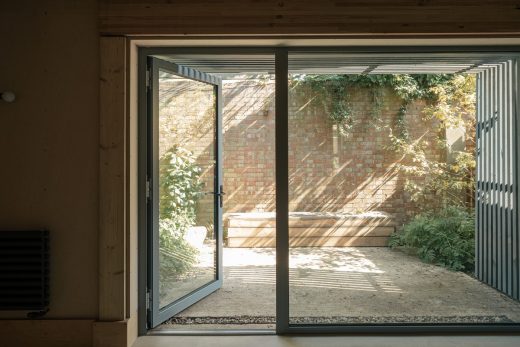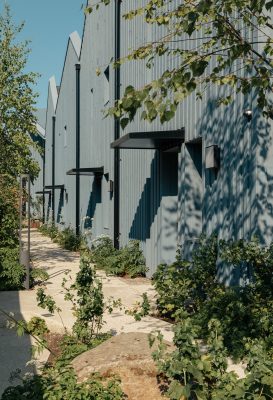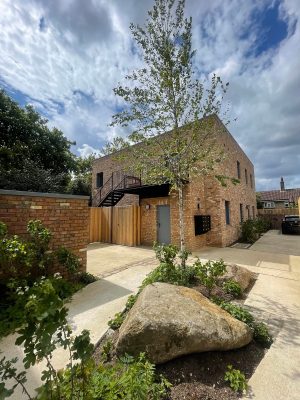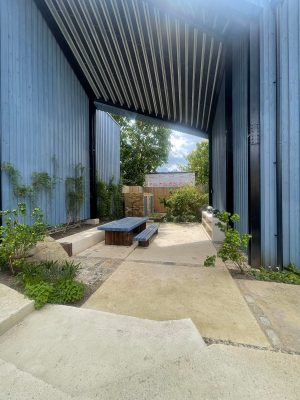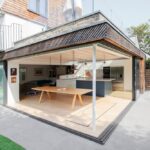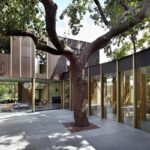Walthamstow carbon negative mews homes, Waltham Forest property, Northeast London house images
Walthamstow carbon negative mews homes
19 April 2024
Carbon negative mews highly commended at SBD development awards
Design: Boehm Lynas Architects
Location: Walthamstow, Waltham Forest, Northeast London, England, UK
images courtesy of Secured by Design ATLAS awards
The Arbour – Walthamstow Village Homes
A carbon negative mews development in the London Borough of Waltham Forest has been highly commended at this year’s Secured by Design (SBD) ATLAS awards.
Situated in one of London’s most popular areas to live, Walthamstow Village, The Arbour is a development of 10 modern and spacious properties just a short walk from Walthamstow Central station. It has been built to be carbon negative over its lifetime, with zero construction waste and energy positive, generating more energy on-site than it consumes on an annual basis, thus incurring no energy bills.
Designing Out Crime Officers from Metropolitan Police engaged with the developer throughout the build. The unique nature of the carbon negative/zero waste design meant that some of the aspects needed very specific security rated products or a bespoke design/security enhancements that still provided a suitable level of protection. Products from Secured by Design member companies Arbor-Fenex Windows, CAME Entrotec and The Safety Letter Box Company were all fitted to the properties within the development.
The development was able to achieve SBD certification without compromising the vision of a pioneering planet positive development, showing that developments can be safe and secure whilst reducing the impact on the environment.
Receiving the award, Metropolitan Police Designing Out Crime Officer Matthew Fletcher said: “It has been a pleasure to work with the Architects and Developers to ensure a security-conscious scheme even with unique site-specific requirements. Advice was taken on board and implemented throughout the build and this is evident from the lack of crime and ASB reported in this development.”
Developers Gs8 said: “The Arbour was an extremely ambitious development in terms of its environmental ambitions, but also challenging in terms of its position as a backland site with a history of crime. Matthew was proactive and helped us to find solutions that enabled us to meet the requirements of SBD, whilst being able to deliver on our carbon, waste and energy targets for the development.
“The Arbour was intended to prove that a market leading and authentic environmentally conscious development can meet the requirements of policies and regulations and provide an enjoyable and safe place to live, which thanks to all involved, including LB Waltham Forest and SBD, we were able to achieve.”
Architects Boehm Lynas said: “Resident’s safety and security is at the heart of any community led design, which was integral to the overall environmental goals of this development. Our engagement with SBD from an early stage helped to achieve this and we are pleased the outcome was a successful one.”
Improved security
Developers around the UK can achieve SBD awards for incorporating crime prevention measures and techniques into their developments in all kinds of building sectors, such as residential, education, health, transport, commercial, retail, sport and leisure. Indeed, SBD can be used as evidence to discharge third-party obligations under Part Q of Schedule 1 (Security) to the English Building Regulations, the Scottish Building Standard 4.13 (Security) and Welsh Building Regulations Part Q (Security – Dwellings). These awards are gained by working with police Designing Out Crime Officers (DOCOs), who advise architects, developers and local authority planners long before construction begins – and continue to provide advice and guidance until the development is complete.
Academic and other research shows that improving standards of security in brand new and refurbished properties, helps deter and reduce crime. Reducing crime and the fear of crime has direct links to better physical and mental well-being, such as with regard to high volume crimes like domestic abuse.
The built environment influences the behaviour of people who work, live, socialise or simply pass through. SBD seeks to create environments where the law-abiding feel safe and secure whilst at the same time causing the criminal or anti-social to feel vulnerable to detection and thereby influence behaviour in a positive way. This continues to be a key objective for SBD.
SBD Design Guides
SBD has produced a series of authoritative Design Guides to assist the building, design and construction industry to incorporate security into developments to comply with the Building Regulations in England, Scotland and Wales and meet the requirements of SBD.
These Design Guides, available to download for free at the SBD website, have been updated over the years to keep pace with changing patterns of criminal behaviour and advances in building design and new technology.
They are a valuable source of reference to architects, developers, self-builders, local authority planners and police officers and cover a range of building sectors, including residential, education, health, transport and commercial.
Police Designing Out Crime Officers
DOCOs provide specialist crime reduction advice to the public, businesses and colleagues about premises or property security. They also work with building developers, architects, and council planning departments regarding new developments and refurbishments, to ‘design out’ crimes like burglary and anti-social behaviour (ASB) by providing advice on street lighting, building and street layout, entrances and exits – as well as preferred standards and specifications for doors, windows, and locks, under the Secured by Design initiative.
DOCOs are able to deliver site specific interventions required to help design out crime in areas that suffer disproportionately from acquisitive crime, based on local crime pattern analysis, police, local authority and community engagement and the collective knowledge and experience of how criminals behave.
DOCOs are specialist problem solvers, working every day to make a positive difference, changing lives for the better and helping people to be safe and secure in their homes.
Walthamstow carbon negative mews homes, London images / information received 160424
Location: Walthamstow, Northeast London, UK.
Walthamstow Property Design
Walthamstow Property Designs
Catching Sun House by Studioshaw, Walthamstow, Northeast London, England, UK
Design: Studioshaw
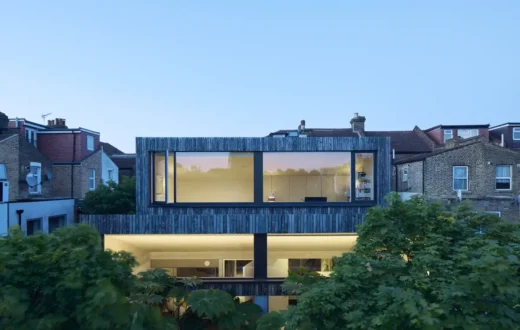
photo : James Brittain
Black Ridge House Walthamstow
Design: Neil Dusheiko Architects
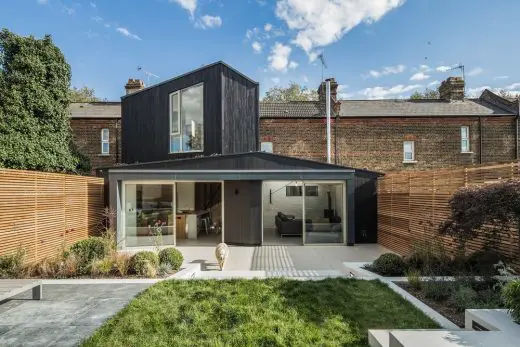
photo : Tim Crocker
Pocket Apartments Walthamstow
Design: Gort Scott Architect
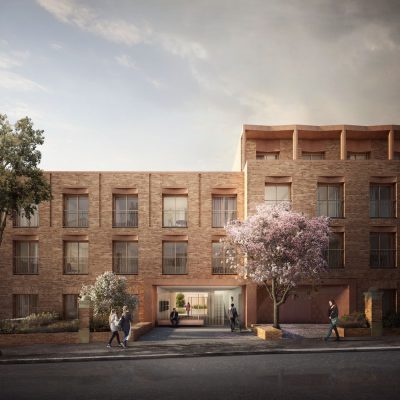
image courtesy of architects practice
Soho Theatre in Walthamstow
Architects: Pilbrow & Partner
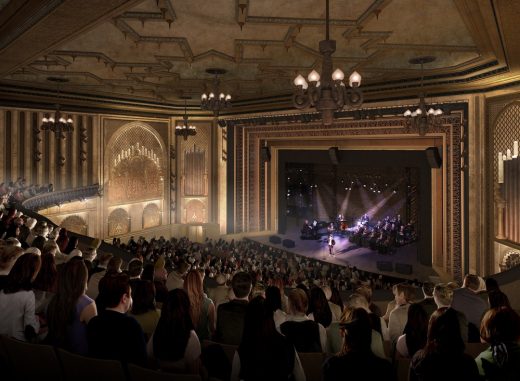
image © Pilbrow&Partners
Northeast London Buildings
Thornhill House, Islington, northeast London
Design: Bradley Van Der Straeten
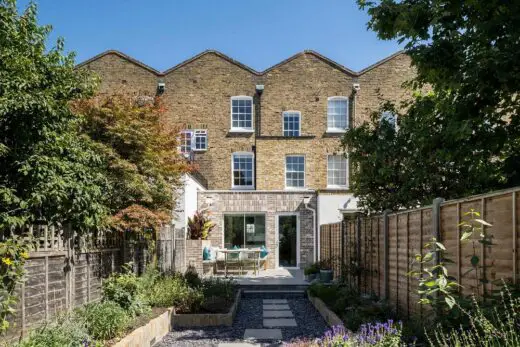
photo : French + Tye
Thornhill House, Islington
House for a Gardener, Haringey, Northeast London
Design: Amos Goldreich Architecture
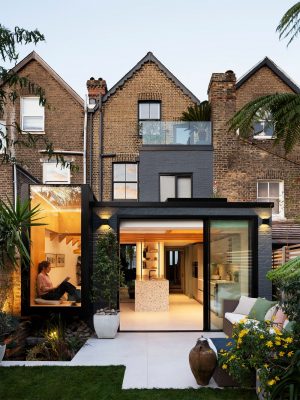
photograph : Ollie Hammick
House for a Gardener, Haringey
Dalston Works
Design: Waugh Thistleton Architects
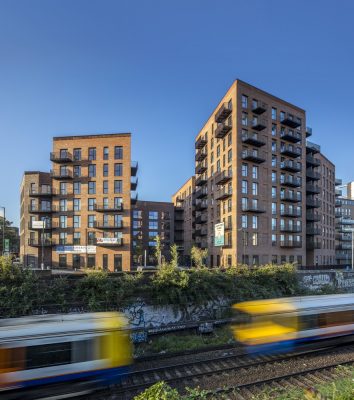
photo : Daniel Shearing
Dalston Works Mixed-Use Development in Hackney
Kings Crescent Estate Phases 1 and 2, Hackney
Architects: Karakusevic Carson Architects and Henley Halebrown
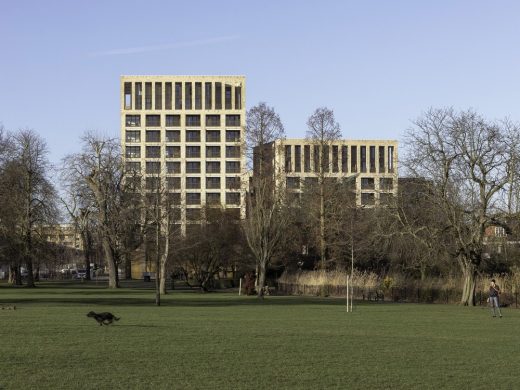
photo © Peter Landers
Kings Crescent Estate Phases 1 and 2
Kinetica apartments in Dalston
Hackney Housing at Adelaide Wharf
Architecture in London
London Architecture Links – chronological list
London Architecture Walking Tours by e-architect
Northeast London Architecture
Agar Grove Homes, Camden
Design: HawkinsBrown
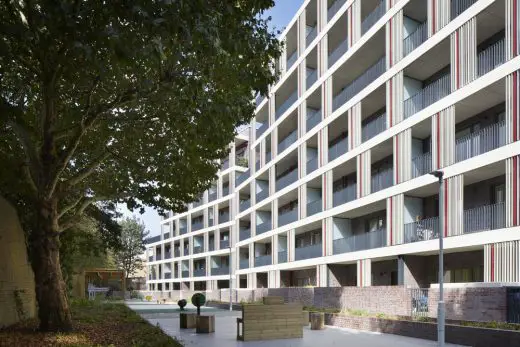
photo © Jack Hobhouse
Frampton Park Baptist Church Building in Hackney
Design: Matthew Lloyd Architects LLP
Comments / photos for the Walthamstow carbon negative mews homes in Northeast London design by Architects Boehm Lynas page welcome.


